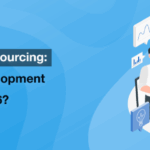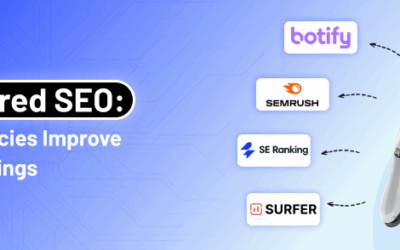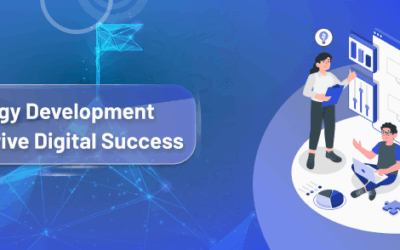
In the new digital marketplace, brand exposure is insufficient. The businesses that are willing to have sustainable growth require not awareness but the Digital Brand Marketing strategies that work. Rather than pursuing vanity metrics (impressions or followers), forward-thinking companies are optimizing engagement into quantifiable deliverables (sales, subscriptions, and leads).
This tutorial divides the process of creating a digital strategy of brand marketing that converts, step by step. You will find out how to align your brand to quantifiable objectives, create audience-oriented campaigns, and gauge outcomes that count.
Why Converting Brand Strategy Beats Vanilla Awareness
The creation of awareness is a good start. But when you stop your campaigns at recognition, you are leaving opportunities on the table. Digital Marketing Services are conversion-based branding.
- Awareness campaigns cause you to become a household name.
- Conversion-based campaigns get people to take action, be it clicking a button, subscribing to a newsletter, or buying something.
Example: Savvy brands develop landing pages with their calls-to-action (CTAs) instead of a general ad campaign that helps to build awareness but does not turn traffic into a customer.
Step 1: Define Brand Identity & Unique Value Proposition (UVP)
The basis of all Digital Brand Marketing is your brand identity. And without a distinct identity, your campaigns will become erratic and unmemorable.
- Visual Identity: Fonts, colors, design consistency, and logo.
- Voice & Tone: How you address your audience in channels.
- Values & Mission: What your brand is.
Most of all, identify your Unique Value Proposition (UVP). This is the main message that should make people select you among your opponents. Companies such as Information Synergies LLC usually assist enterprises to perfect their UVP by developing their Strategy using professional Strategy Development Services, so that all their campaigns are tied to a specific market position.
Step 2: Understand and Segment Your Target Audience
Good strategies begin with understanding who you are talking to. The Digital Marketing Service provider of your choice must assist your company in creating elaborate buyer portraits that illustrate customer requirements, issues, and driving forces.
- Demographics: Age, income, location.
- Psychographics: Interests, lifestyle, values.
- Behavioral Data: Browsing history, purchase behavior, decision triggers.
When you have defined these personas, segment them. Not all audiences are willing to make a purchase. Others are simply shopping around, and others are ready to buy. You can maximize conversions by segmenting messages for each segment.
Step 3: Conduct Situation & Competitor Analysis (SOSTAC “S”)
And you cannot create a winning strategy without understanding your present position.
- Review your existing presence: SEO, social media, and website performance.
- Find strengths and weaknesses: Does your brand have good looks but is bad at lead nurturing?
- Analyze competitors: learn their message, advertising budget, and activity.
This step brings out gaps and opportunities. Strategy Development Services can help you develop your strategy professionally through benchmarking of your competitors.
Step 4: Set Conversion-Oriented Objectives & KPIs (SOSTAC “O”)
As soon as you know where you are, you have to have measurable goals. Your Digital Brand Marketing strategy needs to be aligned with business results, rather than marketing vanity indexes.
The most important KPIs to monitor:
- Conversion rates
- Cost per acquisition (CPA)
- Return on ad spend (ROAS)
- Customer lifetime value (CLV)
Examples Goal: “Get 500 new leads in the upcoming quarter through email opt-ins at a 15 percent lower cost per lead.
Step 5: Define Strategic Approach (“How” You’ll Convert)
This step links creativity and implementation. The following is how to create a winning strategy:
- Storytelling: Design stories that demonstrate how your product or service is going to resolve customer problems.
- Channel Mix: Strikes a balance between SEO, social media, email, and paid ads.
- Personalization: Provide customized messages according to the behavior of the users.
Example: Retargeting advertisements could be used by an e-commerce store to remind visitors of products in their cart.
Step 6: Pick Tactics That Drive Engagement & Action
It is now time to choose what tactics will help make your strategy come alive.
- SEO & Content: Write blogs with high-intent keywords.
- Interactive Campaigns: Polls, quizzes and gamification to stimulate engagement.
- Influencer Marketing: Micro-influencers can be used in focused campaigns.
- Co-Branding: Enlist the support of another brand to increase reach and credibility.
Example: Spotify and Starbucks joined together to combine music playlists into coffee stores and both companies win.
Step 7: Execute with Precision (SOSTAC “A”)
Execution refers to implementing your ideas on a regular basis.
- Create a content schedule, with plans on how to post on social networks, email messages, and blog posts.
- Automate and use tools such as HubSpot or Hootsuite.
- Be consistent in all platforms with the brand.
Another area that businesses fail in is execution, and that is why some will seek the professional services of Strategy Development Services offered by Information Synergies LLC, where they can have the help of professionals in organizing campaigns and making them effective.
Step 8: Monitor, Optimize, and Control (SOSTAC “C”)
An effective plan does not merely cease to exist once it has been implemented but develops.
- Monitor: Keep a track of KPIs using tools such as Google Analytics or SEMrush.
- Optimize: A/B testing allows the optimization of landing pages, subject lines, and ad creatives.
- Control: See campaigns remain on track with overall brand objectives.
This monitoring and refining cycle is what makes the investment in your Digital Marketing Service a long-term ROI.
Step 9: Your Digital Brand Conversion Playbook
The following is a checklist of what you need to put in place to create a conversion-ready strategy:
- Define brand identity + UVP
- Create personas and divide and conquer.
- Competitor analysis and existing positioning.
- Set measurable KPIs
- Create a multi-channel strategy.
- Plan and implement with a content calendar.
- Track and streamline on a regular basis.
- Learn and adapt through use case studies.
Conclusion & Next Steps
In the busy digital world today, companies can no longer risk launching buzz-creating campaigns that do not achieve any outcomes. Through the development of a Digital Brand Marketing plan, each of the touchpoints will direct the customer to conversion.
You may be new to the game or may be perfecting your strategy, but having a professional work with you can help you succeed faster. Companies such as Information Synergies LLC deal in Strategy Development Services that work to tie branding to measurable returns.
Want your brand visibility to convert into real conversions? Contact Information Synergies LLC today to have a consultation and take the next step to developing a strategy that actually works.








